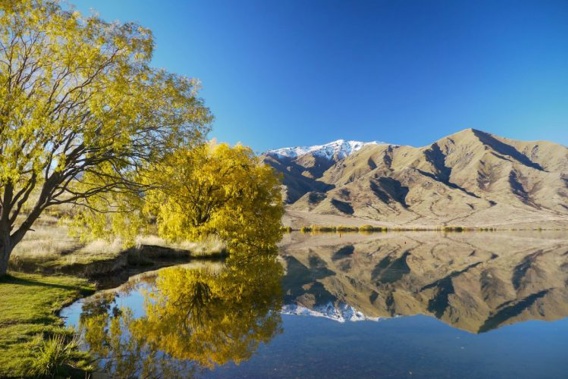
Sweet and serene escapes with wide open spaces is just the ticket in the slow ride out of this insidious pandemic. The Waitaki Lakes District, stretching from Ōmarama to Kurow, ticks all those boxes with surprises aplenty for the eager explorer. Crowning the head of the Waitaki Valley and backdropped by the Southern Alps, the junction town of Ōmarama brims with distinction. Ōmarama is Māori for ‘place of light’, a pitch-perfect description for the big skies, clarity of the light and the starkness of the surrounding landscape. Ōmarama is the gliding capital of New Zealand, where so many national and international gliding records have been achieved. It’s the unique uplift of the wind conditions that lures the record-seekers, such as Steve Fossett who smashed a speed record soaring above Ōmarama.
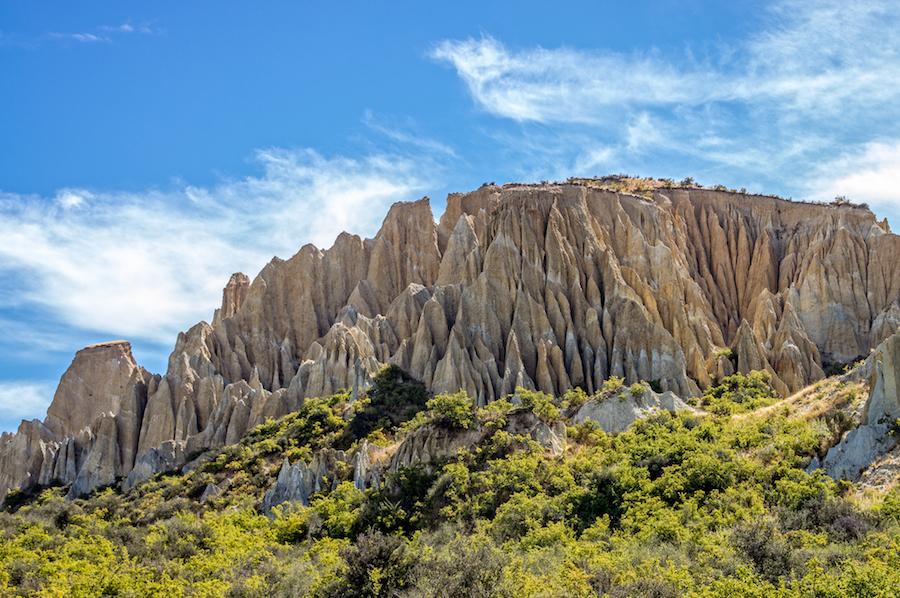
Don’t you love coming across something so unexpected and unusual, on a road-trip? That’s how most visitors feel when they first clap eyes on the bewitching glory and striking landforms of the Paritea Clay Cliffs. It’s one of the most popular geo-sites in the Waitaki Whitestone Geopark, just minutes from Ōmarama, on Henburn Road. It is absolutely worth the 15 minute diversion off the main road to savour this serrated geological wonder, complete with a slot canyon to shimmy through. It feels like a mix of Utah and Petra as you size up the fluted shapes of the tall columns and the beautiful pastel colours. They are a grand collection of ‘bad land’ sharp pinnacles and ridges separated by steep and narrow ravines, reminiscent of giant organ pipes, of varying sizes, thrusting up from the eroded cliff face.
The landmark was created out of layers of silt and gravel deposited by ancient lakes and rivers around 20 million years ago. They have since been uplifted and tilted by the nearby active Ostler Fault, and eroded. The cliffs are on private land and there is an honesty box at the gate where you are asked to pay $5 per car. After passing through the gate, drive to the carpark. From here you can walk up to and among the cliffs (10-15 mins from carpark one way). The road and track can get a little rough after rain– and inside the cliffs’ slot canyon, those rocks do get slippery underfoot. Closed, sturdy footwear is advised.
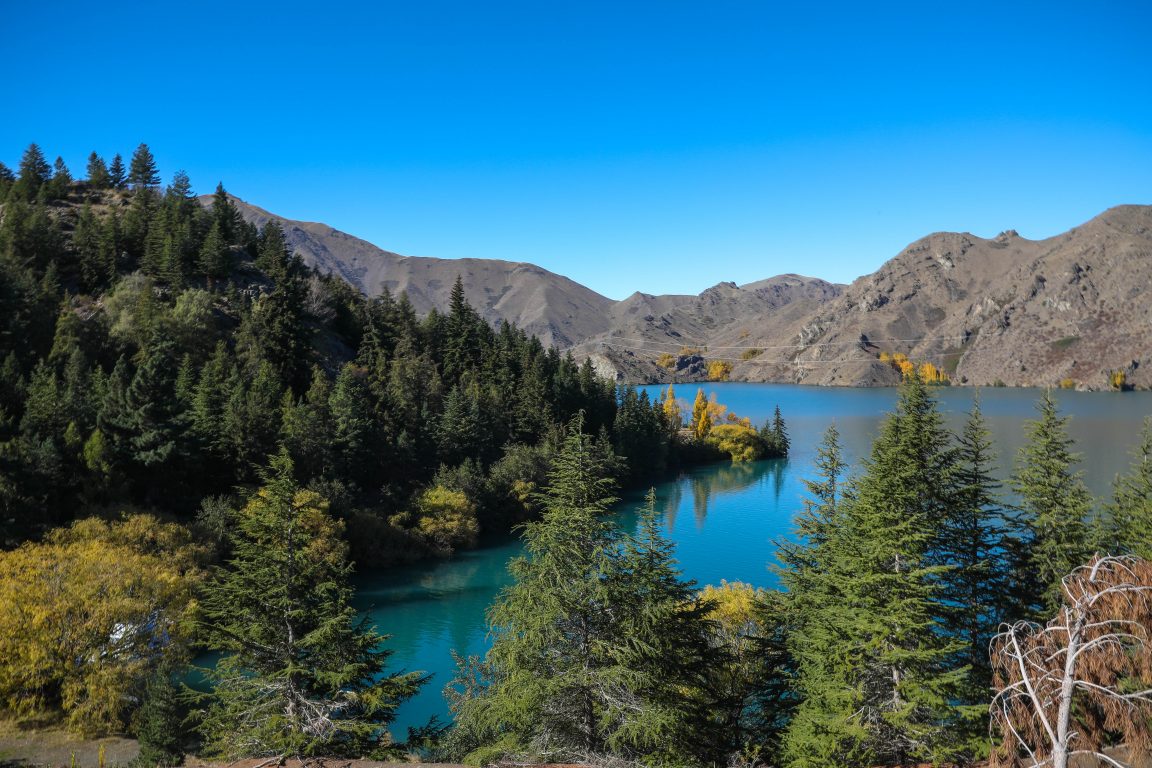
Feeling weary or deserve a little pampering? Treat yourself to the eco-friendly glamour of the Ōmarama Hot Tubs, where you’ve got a ringside seat on those soothing alpine views. This is wellness all wrapped-up in a wood-fired hot tub, by night and day. The ten private tubs have no chemicals added to the water. They are cleaned and refilled after each use, with water redeployed to irrigate the land. It’s a prime spot to bliss out.
From Ōmarama, journey east on SH83, which spans the length of the undulating sprawl of the Waitaki Valley and delve into the delights of the Lakes District, studded with hydro stations. First up is Lake Benmore, New Zealand’s largest artificial lake, created by the Benmore Hydro-Dam. It was completed in 1965 and at the time was New Zealand’s biggest ever construction project. It remains our largest rammed earth dam. The lake holds about 1.25 billion cubic meters of water, which is roughly 1.5 times the water in Wellington Harbour! With its vivid blue colour and breathtaking hill country views, Lake Benmore is a peaceful haven, all year round.
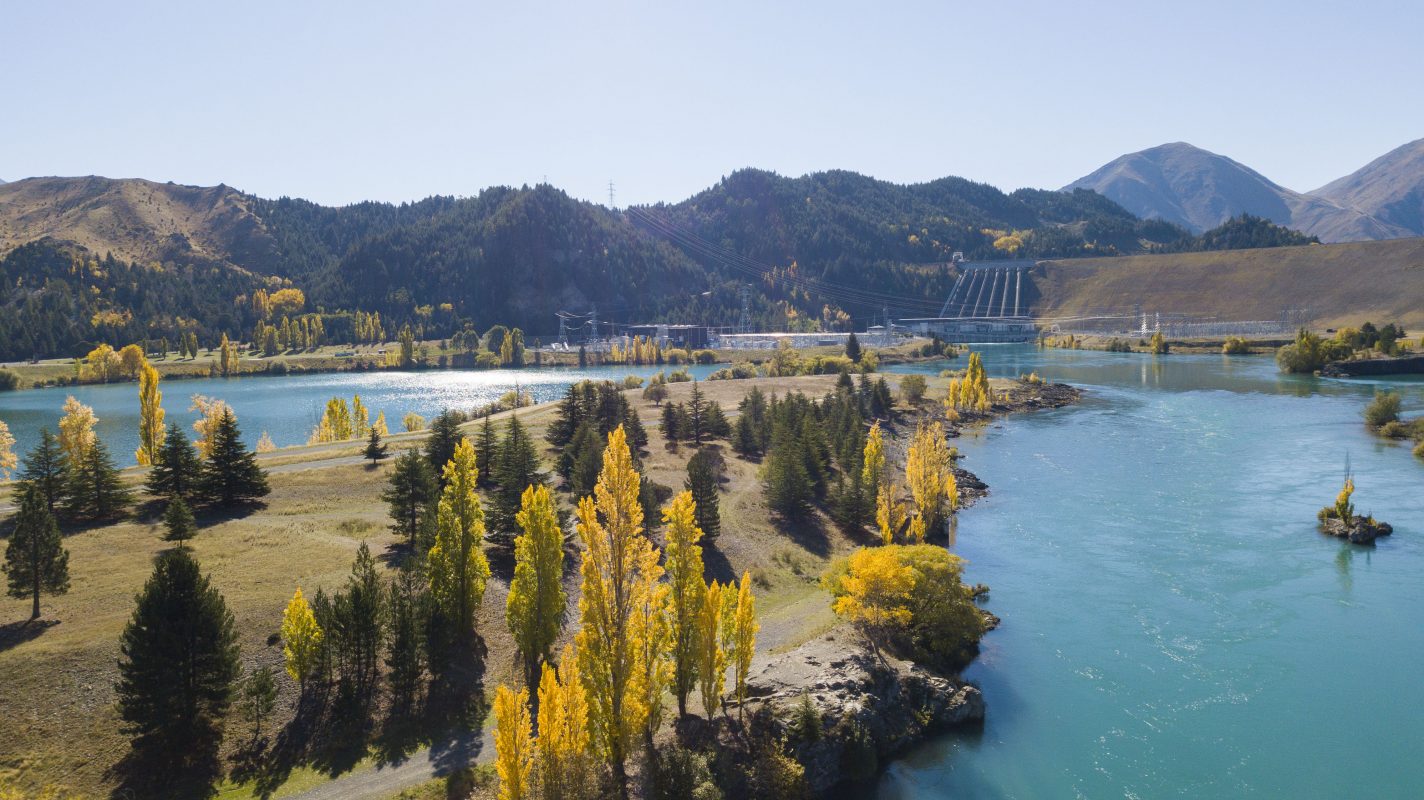
Popular with boating and fishing enthusiasts, Benmore also boasts fantastic walking and cycling trails. I highly recommend the Benmore Peninsula Track, a 4km loop walk just up the hill, for dreamy views down on the lake, while Mt Cook shimmers in the distance. Do it early in the morning, when the weather is typically calm. Pumpkin Point is a stunningly scenic spot on Lake Benmore to roll out the picnic rug. Between the Lakes Benmore and Aviemore lies a supreme summer camping destination and year-round holiday hub when visiting the Lakes District: Ōtemātātā. Originally established as a construction town for the nearby power stations, it’s now a superb tourist base to enjoy the great outdoors.
The Ōtematata Wetlands trail is a magnificent lakeside circuit, shaded in vast stands of willows and Lombardi poplars. Crossing over the Benmore power station to the northern side of the lake, the Te Akatarawa Road connects Ōtematata with the Aviemore power station, where a rolling medley of camping grounds bracket the banks of Lake Aviemore. At the road’s end, drive across the soaring Aviemore dam wall to rejoin SH83. Aviemore’s generators are the largest in New Zealand, producing enough electricity each year for about 120,000 New Zealand homes.
Where to stay? Waitaki Lakes Apartments in Ōtematata is a brand spanking new offering, idyllically situated in the holiday township, on the edge of the Ōtematata Wetlands trail. Stylishly furnished with comfortable bedding, full kitchen facilities, a spacious lounge and satellite TV, make it your home away from home. It’s right behind the hearty hospitality of the Ōtematata Eatery & Bar. Bag a memorable stay and a great rate on Booking.com. No matter your budget or accommodation preferences, for great-value stays with total flexibility and convenience, head to https://www.booking.com
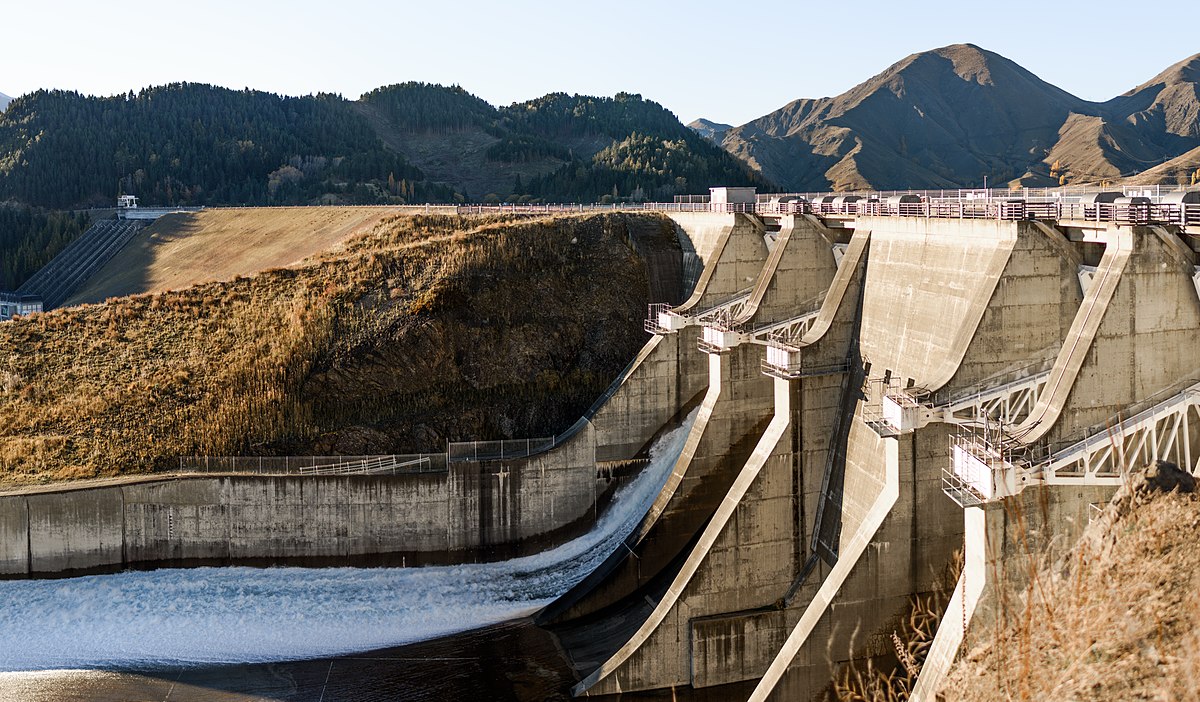
A short hop down the highway, brings you to Lake Waitaki, the smallest and the oldest of the three man-made lakes, comprising the Waitaki hydroelectric scheme. The power station, which was built in the 1920s, looks like a forbidding Victorian behemoth that’s shuffled out of a Dickens novel. Close to Kurow, swap your hydro lakes exploration for a spot of culture. Formally a service town for fortune seekers during the gold rush, it was the building of the Waitaki Dam and the commencement of the hydro-power scheme that accelerated Kurow’s growth.
The town cradles its fair share of scenery and culture, not to mention proudly being the birthplace of Richie McCaw. The Kurow Museum, on the aptly named Bledisloe St, lustily showcases their favourite son’s rise to sporting stardom. Two doors down from the museum, pop into the historic 1864 Kurow Hotel. It’s one of the town’s few heritage buildings still in use, loudly painted in bright blue and yellow. It’s a two-storey tribute to one previous owner drinking DB, while the other preferred Speights. How very Kurow.
The Waitaki Valley’s recent advance into viticulture is attracting attention with 13 wineries and vineyards now in operation. Throughout the valley, seams of limestone provide the ideal foundation for producing Burgundy-style wines. The first vines were planted just 20 years ago and the limestone rich soils, combined with the arid climate give rise to delicate tones. Pinot Noir is the signature variety planted, alongside Pinot Gris and Riesling. Wine buffs believe the Waitaki Valley is a boutique wine region to watch as its potential unfolds and its reputation grows. River-T Wines is a small vineyard that was planted in 2007, and well worth a visit.
They hand-harvest their grapes from April until mid-May, making it one of the last vineyards to harvest in New Zealand. Their 2019 Pinot Noir is particularly good, as is their Barrel Ferment Pinot Gris. Enjoy a personalised tasting of Ostler Wine’s award-winning Pinots at their cellar door in Kurow. Finally, to metaphorically drink in the valley’s sweeping splendour, take the 45-minute climb up Kurow Hill walkway for panoramic views across the river to the Hakataramea Valley. I’ll raise a glass to that! https://waitakinz.com/
Take your Radio, Podcasts and Music with you









